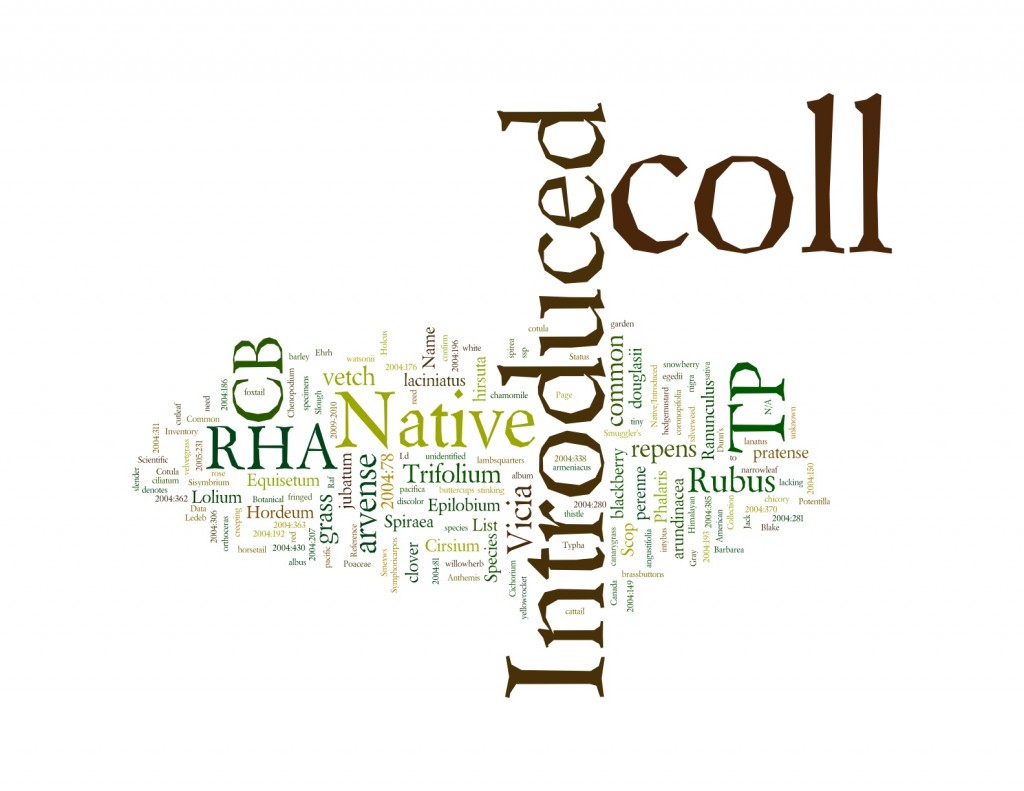About
The Northwest Indian College (NWIC) Herbarium is an outgrowth of the ENVS 201, Northwest Plants course that was designed and taught by John Rombold each spring beginning around 2000 and later co-taught with Brian Compton. After some time, Brian taught that course each spring quarter and beginning in 2010 he frequently taught that course throughout the academic year, including during the summer, fall, winter and spring quarters.
The ENVS 201 course has included instruction on the identification of local native vascular plants with emphasis on flowering plants. Over the years, students began turning their field collections into herbarium-quality specimens, and additional emphasis was placed on developing herbarium facilities and resources at NWIC.
Beginning in the summer of 2007, students began to learn about herbarium design and curation as well as aspects of local flora collection and identification. Chelsea Ross’ summer internship project was the first to combine a dual focus on an inventory of local botanical species and herbarium development.
Several other students have now participated in the further development of the NWIC Herbarium through their engagement in ENVS 201 coursework throughout the year and by participating in summer botany internships such as those focusing on plants at Cherry Point, Smexws (Smuggler’s Slough), the Mount Baker-Snoqualmie National Forest, the Kwina Woods and adjacent NWIC Lummi campus, as well other locations in and near Whatcom County.

word cloud based upon 2009-2011 botanical collection data from Smexws, also known as Smuggler’s Slough (click to enlarge)
Herbarium specimens now include those collected in the spring, summer and winter quarters which have expanded the range of variation in growth and development amongst the specimens represented. The collections are a requirement of the ENVS 201 course and contain other specimens associated with various student research projects. They also serve further research and teaching purposes once they are deposited into the herbarium.
The NWIC Herbarium is currently housed in the rear of SCI-1, the biology lab in Building 11, and much of the work related to the Herbarium takes place in NES 113 in the Native Environmental Science Building (Building 16). It contains vascular plants, bryophytes and algae from Washington and elsewhere.

